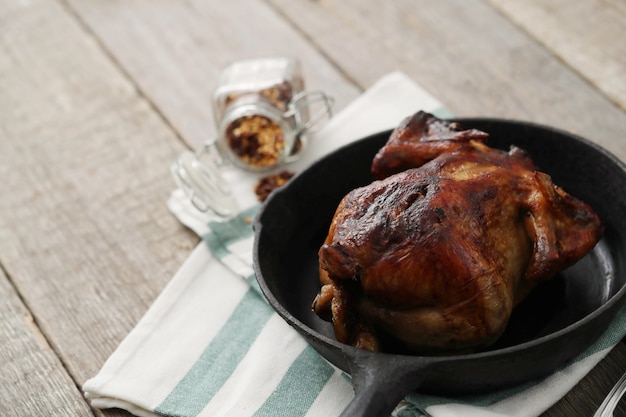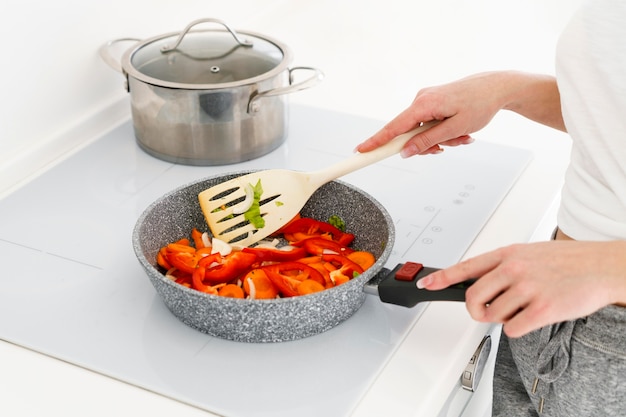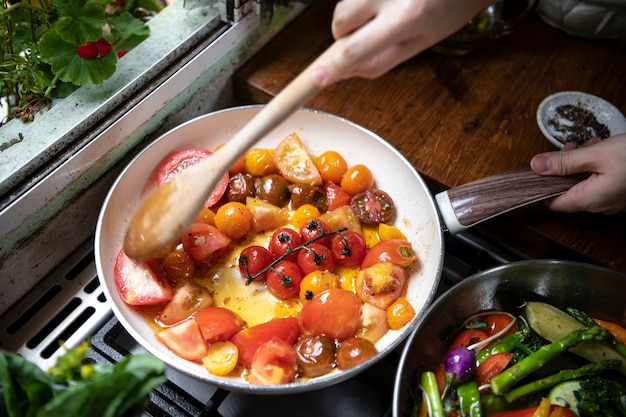The aroma of a slow-cooked pot roast fills the house with a comforting warmth, promising a meal that’s both delicious and incredibly satisfying. It’s a dish that conjures up images of cozy evenings, family gatherings, and the kind of food that makes you feel truly nurtured. But achieving that perfect pot roast, that melt-in-your-mouth tenderness, requires more than just throwing a chuck roast into the slow cooker and hoping for the best.
Over the years, I’ve become somewhat of a pot roast enthusiast, experimenting with different cuts of meat, recipes, and cooking times. I’ve learned that slow cooking, despite its simplicity, has a hidden art to it. It’s about understanding the nuances of cooking time, the interplay of temperature and patience, and the joy of creating a dish that’s truly perfect.
So, let’s embark on this culinary journey together. I’ll guide you through the essential elements of slow-cooking pot roast, from choosing the right cut of meat to mastering the perfect cooking time. By the end, you’ll have the confidence to create your own masterpiece, a pot roast that’s guaranteed to impress even the most discerning palate.
(Part 1) The Cuts That Make a Difference

The foundation of any great pot roast is the meat itself. Choosing the right cut is crucial, as it directly influences the texture and flavour of the final dish.
Chuck Roast: The Classic Choice
For a truly tender and flavorful pot roast, chuck roast reigns supreme. It’s a tough cut, packed with connective tissue that breaks down beautifully during long, slow cooking. This breakdown releases collagen, creating a rich, gelatinous sauce and transforming the meat into melt-in-your-mouth goodness.
I vividly remember the first time I slow-cooked a chuck roast. I was skeptical, as it looked rather tough and unpromising. But after several hours of gentle simmering, it emerged as a tender, flavorful masterpiece. It was a revelation, proving that slow cooking can work magic on even the most challenging cuts of meat.
Beyond Chuck Roast: Other Prime Options
While chuck roast is a classic, there are other cuts that can yield delicious results in the slow cooker. Each cut has its own characteristics, offering a range of textures and flavours to explore.
- bottom round roast: A leaner alternative to chuck roast, bottom round offers a slightly more delicate texture. It’s a good choice if you’re looking for a less fatty pot roast while still achieving that melt-in-your-mouth tenderness.
- Blade Roast: Similar in characteristics to chuck roast, blade roast is often more affordable. It’s a great option for budget-conscious cooks who want a flavorful and tender pot roast.
- Brisket: Known for its rich marbling and intense flavour, brisket is a luxurious choice for slow cooking. It produces a pot roast that’s incredibly tender, with a deep, savory flavour that’s sure to impress.
(Part 2) Choosing the Right Slow Cooker

The slow cooker is your partner in crime when it comes to creating a perfect pot roast. This trusty appliance provides the gentle, consistent heat needed to transform tough cuts of meat into tender, flavorful meals.
Size Matters: Finding the Right Fit
Before you choose a slow cooker, consider the size of the pot roast you’ll be cooking and how many people you’re serving. A 4-quart slow cooker is perfect for a smaller pot roast, serving 2-4 people. For larger roasts and gatherings, a 6-quart or even an 8-quart slow cooker will provide ample space.
I’ve learned firsthand that a slow cooker that’s too small can lead to overcrowding. This can hinder even cooking, resulting in overcooked edges and undercooked centres. It’s best to choose a slow cooker that allows the meat and vegetables to cook comfortably, ensuring a beautifully tender and evenly cooked result.
Features to Enhance Your Slow Cooker Experience
Here are a few additional features to look for in a slow cooker, enhancing your slow-cooking experience:
- Multiple Heat Settings: A slow cooker with at least two heat settings, “low” and “high,” allows you to fine-tune the cooking temperature. This provides flexibility, especially when dealing with different cuts of meat and personal preferences.
- Timer Function: A timer function is incredibly useful, especially when you’re busy or out of the house. It allows you to set the slow cooker to turn off automatically after a specified time, ensuring that your pot roast doesn’t overcook.
- Removable Crock: A removable crock simplifies cleaning, allowing you to easily wash the crock separately without having to scrub the entire appliance. It’s a welcome feature for anyone who appreciates a hassle-free cleanup process.
(Part 3) Mastering the Art of Timing

Time is the key ingredient in slow-cooked pot roast, allowing the heat to gently transform the meat and create a symphony of flavors.
The "Rule of Thumb": A Starting Point
A common rule of thumb is to cook a 3-4 pound pot roast on low for 6-8 hours or on high for 4-6 hours. However, this is just a general guideline, and it’s essential to adjust the cooking time based on the cut of meat, the size of your roast, and your personal preference.
A Handy Chart for Your Reference
Here’s a detailed chart to give you a better understanding of recommended cooking times for different cuts of pot roast.
| Cut of Meat | Low (6-8 hours) | High (4-6 hours) |
|---|---|---|
| Chuck Roast (3-4 pounds) | 6-8 hours | 4-6 hours |
| Bottom Round Roast (3-4 pounds) | 7-9 hours | 5-7 hours |
| Blade Roast (3-4 pounds) | 6-8 hours | 4-6 hours |
| Brisket (3-4 pounds) | 8-10 hours | 6-8 hours |
Factors Affecting Cooking Time: Beyond the Basics
The chart provides a helpful starting point, but it’s essential to remember that several factors can influence the cooking time, including:
- Size of the Roast: A larger roast will require a longer cooking time than a smaller one to ensure that the centre is cooked through.
- Thickness of the Roast: A thicker roast will also need more time to cook evenly, ensuring that the centre reaches the desired internal temperature.
- Slow Cooker Size: A smaller slow cooker might require a slightly longer cooking time to allow the meat to cook thoroughly.
(Part 4) The Importance of Tenderness
The hallmark of a perfectly cooked pot roast is its tenderness. The meat should be so tender that it practically melts in your mouth. Achieving this delicate balance between flavour and texture is the ultimate goal of slow cooking.
Fork Tenderness: The Ultimate Test
The best way to determine if your pot roast is done is by checking for fork tenderness. Simply insert a fork into the thickest part of the roast. If it slides in effortlessly and the meat pulls apart with little resistance, it’s ready!
I recall one instance where I was eager to serve my pot roast. After a few hours, I thought it was done, but when I tested it, the fork met resistance. I realized it needed more time and cooked it for an additional hour. It was then, and only then, that the meat achieved that heavenly fork tenderness. It’s always better to err on the side of caution and allow the meat to cook fully to ensure it reaches the desired texture.
Internal Temperature: A Reliable Backup
If you’re unsure about fork tenderness, a meat thermometer provides a reliable alternative. The safe internal temperature for pot roast is 145°F (63°C). When the meat reaches this temperature, it’s safe to eat.
(Part 5) The Art of the Recipe
Now that we’ve discussed the meat, the slow cooker, and the timing, let’s delve into the heart of the pot roast: the recipe itself. This is where the magic truly happens, where carefully chosen ingredients and seasonings come together to create a symphony of flavours.
Seasoning: The Key to Flavorful Depth
Seasoning plays a pivotal role in pot roast. It’s the secret sauce that adds depth and complexity, elevating the dish from ordinary to extraordinary. Here are a few of my favorite seasoning combinations that will transform your pot roast into a culinary masterpiece:
- Classic Beef Rub: A simple yet effective combination of salt, pepper, paprika, garlic powder, and onion powder. This classic blend delivers a rich, savory flavour that complements the beef perfectly.
- Herby Delight: A fragrant combination of rosemary, thyme, oregano, garlic powder, and onion powder. This blend adds a beautiful, earthy dimension to the pot roast, creating a flavor profile that’s both comforting and sophisticated.
- Spicy Kick: For those who enjoy a little heat, this blend combines chili powder, cumin, paprika, garlic powder, and onion powder. It adds a satisfying kick that will leave you wanting more.
Vegetables: A Symphony of Textures and Flavors
No pot roast is complete without a medley of tender, flavorful vegetables. Potatoes, carrots, onions, and celery are classic choices, adding a delightful range of textures and flavors to the dish. But feel free to get creative and explore other options.
I’ve experimented with bell peppers, mushrooms, parsnips, and even rutabagas. The possibilities are endless, allowing you to create a pot roast that’s uniquely your own.
Making it a Meal: Versatile and Satisfying
Pot roast is incredibly versatile, making it the perfect foundation for a delicious and satisfying meal. It can be served with mashed potatoes, rice, or a simple salad, depending on your preferences.
And here’s a little secret: leftover pot roast is even better the next day. The flavors have had time to meld together, creating a symphony of tastes that’s truly unforgettable.
(Part 6) The Importance of Patience
Slow cooking is not a race; it’s about embracing the process, allowing time and heat to work their magic. It’s about enjoying the anticipation, the comforting aroma that fills the air, and the promise of a truly special meal.
In our fast-paced world, it’s easy to fall prey to impatience. We crave instant gratification and seek shortcuts to everything. But the most rewarding experiences often require time and patience. A slow-cooked pot roast is a beautiful testament to this philosophy, reminding us that good things take time.
Tips for Success: Maximizing Your Pot Roast
Here are a few tips to help you achieve that perfect, slow-cooked pot roast:
- Brown the Meat: Browning the meat before adding it to the slow cooker adds a lovely depth of flavor. It also helps to seal in the juices, contributing to a richer, more flavorful pot roast.
- Use a Liquid: Add a liquid to your slow cooker, such as broth, wine, or even water. This helps to keep the meat moist and tender, preventing it from drying out during the long cooking process.
- Don't Overcrowd the Pot: Don’t overcrowd the slow cooker. Give the meat and vegetables plenty of room to cook evenly, ensuring that each component cooks to perfection.
- Don't Stir Too Often: Avoid stirring the pot too often, as this can disrupt the cooking process. Allow the meat and vegetables to cook gently, undisturbed, to achieve the desired tenderness.
(Part 7) Exploring Different Flavours
While a classic pot roast is undeniably delicious, there’s a world of flavors waiting to be explored. From tangy citrus to sweet and savory combinations, you can customize your pot roast to reflect your personal taste preferences.
Adding a Citrus Twist
A splash of citrus brightens up the richness of the meat, adding a refreshing acidity that balances the savory flavors. A squeeze of lemon or orange juice, or even a few slices of oranges, can transform a traditional pot roast into a vibrant culinary experience.
A Dash of Sweetness
For a touch of sweetness, try adding a spoonful of brown sugar or honey. It creates a caramelized crust, adding a delightful depth of flavour and a hint of sweetness that complements the savory notes of the meat.
Spicy and Savoury
If you enjoy a bit of heat, add some chili powder, cayenne pepper, or even a few slices of jalapenos to your pot roast. It adds a satisfying kick that will tantalize your taste buds and leave you wanting more.
International Flavors: Expanding Your Culinary Horizons
Don’t be afraid to experiment with international flavors. For a Japanese-inspired pot roast, add a touch of soy sauce and ginger. Or, try a blend of cumin, coriander, and turmeric for a Middle Eastern twist. The possibilities are endless, allowing you to create a pot roast that reflects your global culinary interests.
(Part 8) FAQs
As you embark on your pot roast adventure, you may have questions. Here are answers to some common inquiries about slow-cooking pot roast.
1. Can I Overcook Pot Roast in a Slow Cooker?
It’s possible to overcook pot roast in a slow cooker, especially if you’re using a higher heat setting. Overcooked pot roast will be dry and tough, a far cry from the tender, melt-in-your-mouth experience we’re aiming for. Keep an eye on the meat, using a fork or a meat thermometer to check for tenderness.
2. Can I Freeze Pot Roast Before Slow Cooking?
Yes, you can freeze pot roast before slow cooking. In fact, freezing is a great way to save time and plan ahead. Make sure to freeze the meat in a freezer-safe bag or container. Thaw it overnight in the refrigerator before slow cooking.
3. Can I Use Leftover Pot Roast?
Absolutely! Leftover pot roast is a culinary treasure, providing delicious possibilities for meals beyond the initial pot roast experience. It can be used for sandwiches, salads, soups, or even a hearty pot pie. Just be sure to store it properly in the refrigerator for up to 4 days.
4. How Do I Thicken the Gravy?
The gravy that develops in the slow cooker is often thin, lacking the desired consistency. You can thicken it by adding a cornstarch slurry. Simply mix 1 tablespoon of cornstarch with 2 tablespoons of cold water. Whisk it into the gravy in the last 30 minutes of cooking, allowing the cornstarch to cook and thicken the gravy.
5. What If My Pot Roast is Too Salty?
If your pot roast is too salty, don’t despair. You can try adding more liquid to the slow cooker, such as broth or water. This will help to dilute the saltiness, creating a more balanced flavour profile. You can also add a touch of sweetness to balance the salty flavour, such as a tablespoon of honey or brown sugar.
Everyone is watching

Corn on the Cob: The Ultimate Guide to Perfectly Cooked Ears
Healthy MealsAh, corn on the cob. Just the name evokes images of sunny days, barbecues, and that sweet, juicy flavour that ...

Scallops: The Ultimate Guide to Perfect Cooking
Healthy MealsAh, scallops. Those delicate, sweet, and utterly delicious morsels of the sea. They hold a special place in my...

Spaghetti Squash: The Ultimate Guide to Cooking and Serving
Healthy MealsRemember that time you saw spaghetti squash at the supermarket, looking all bumpy and strange, and thought, "W...

Salmon Cooking Times: Perfect Guide for Every Recipe
Healthy MealsLet me tell you, cooking salmon is an art form. It's all about getting that perfect balance: juicy and tender,...

Ham Cooking Time: How Long to Bake, Smoke, or Boil a Delicious Ham
Healthy MealsAh, ham. It's a classic, isn't it? A real crowd-pleaser, especially around holidays. And when done right, it'...
